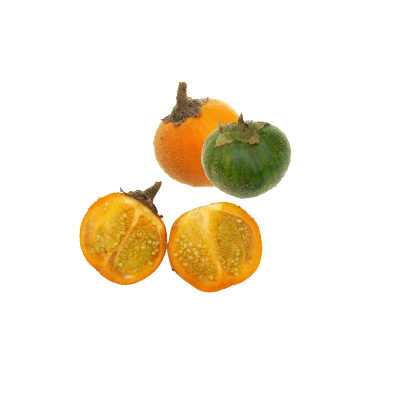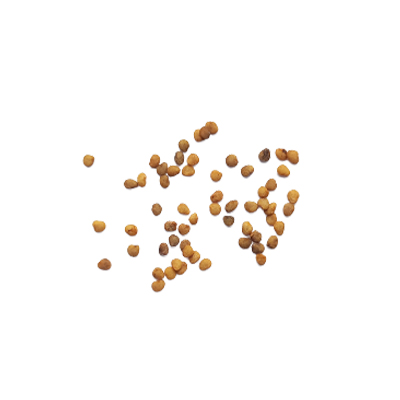Hairy-fruited eggplant
Solanum lasiocarpum Dunal
Solanaceae
Location in our garden
Vegetable
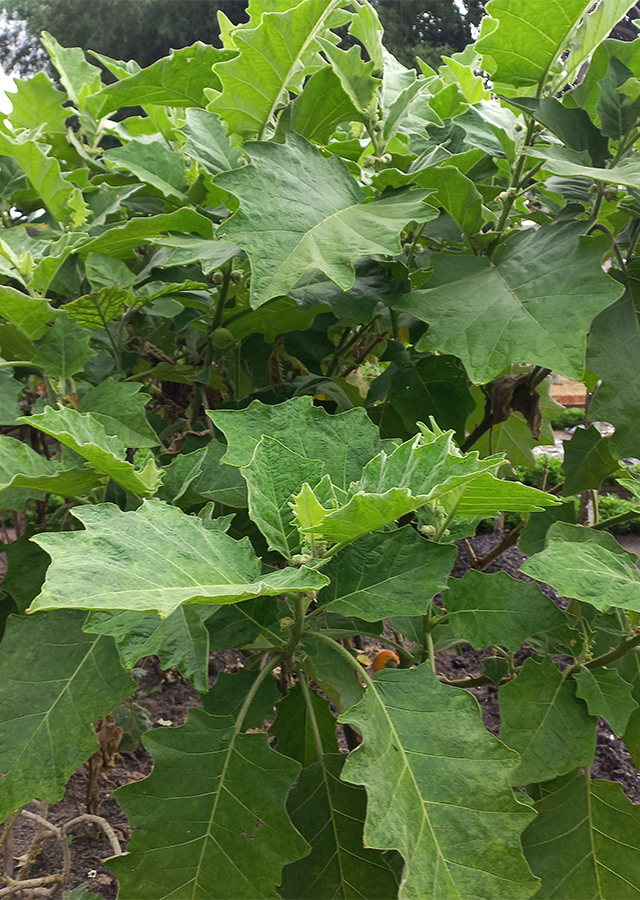
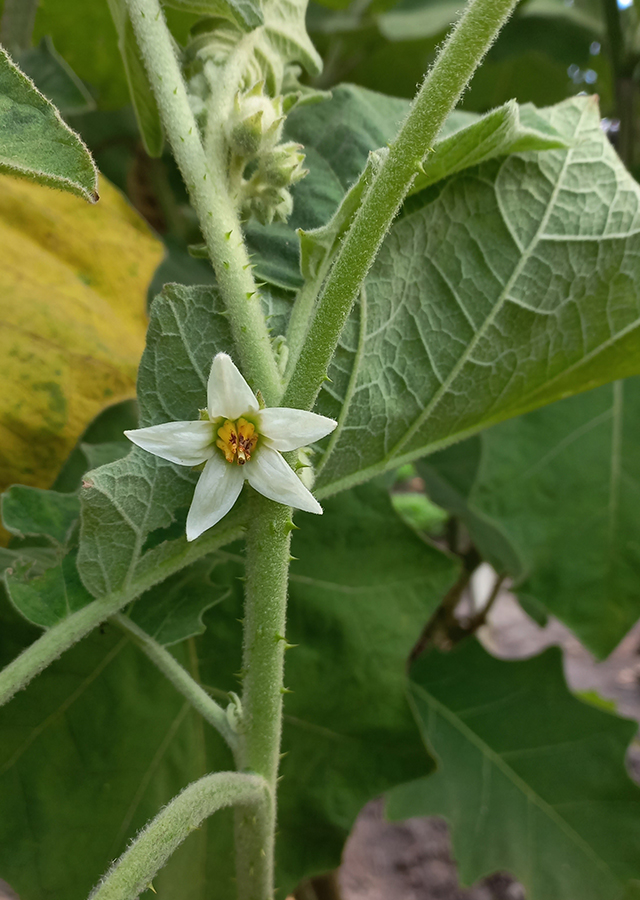
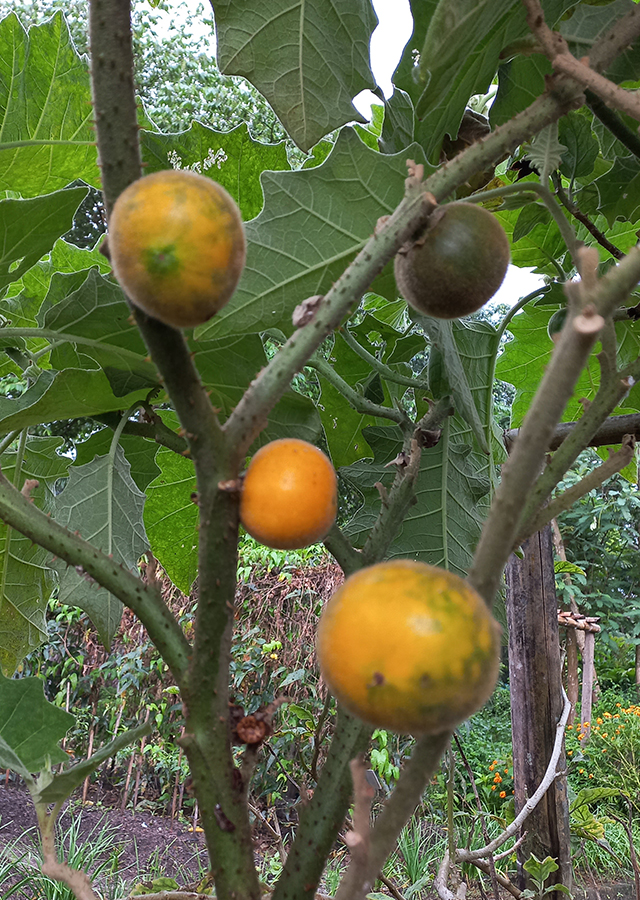
Synonym
Solanum ferox L.
Solanum ferox var. lasiocarpum (Dunal) Miq.
Solanum hirsutum Roxb.
Habitus
Herbaceous. Solanum lasiocarpum is an erect or spreadingly branched herb, lignescent perennial growing 1 - 2 metres tall.
Part Used
Leaves
Seeds
Flowers
Roots
Growing Requirements
Full Sunshine
Need Shade
Habitat
Forest
Shrublands
Terrestrial
Overview
Solanum lasiocarpum is a native from East Asia which spreads in China, India, Sri Lanka, Bangladesh, Myanmar, Thailand, Cambodia, Laos, Vietnam, Malaysia, Indonesia, Philippines, New Guinea, and Solomon Islands. In India, Thailand and Malaysia, the fruit of this Solanum lasiocarpum is widely used as a sour taste in curries, while in Thailand, a special sauce called 'nam prek' is also made from the fruit. In Indonesia, it is known that only on the mainland of Kalimantan this Solanum lasiocarpum grows, then this eggplant has a very sour taste so it is often used as a vegetable ingredient and a mixture of chili sauce. According to the results of this study, this plant shows antibacterial and repellent activity, and the leaves are considered capable of being diaphoretic (removing sweat), emetic (vomiting), and expectorant (phlegm thinner). This plant has also been used in various countries as traditional medicine.
Vernacular Names
Tarong pasai, Tokung (Brunei), Sinkade, Tarabi (Burmese), Mao qie (Mao ch'ieh)(Chinese), Aubergine de Siam à fruit hirsute (Franch), Khüa khôn, Khüa puux (Laotian), Terong dayak, Terong iban (Malay), Terong asam (Indonesia), Sinkade, Tarabi (Myanmar), Su, Su-lamas, Kova-sakau (Papua New Guinea), Berenjena espinuda, Berenjena silvestre (Spanish), Ma ûk, Ma ûk muak, Ma pu, Yangkhuidi (Thai), Cà bung, Cà du (Vietnamese).
Agroecology
A plant of the moist tropics, where it is found at elevations up to 1,500 m. It grows best in areas where annual daytime temperatures are within the range 24 - 30 °C, but can tolerate 10 - 35 °C. It prefers a mean annual rainfall in the range 1.200 - 2.000 mm, but tolerates 800 - 4.200 mm. Succeeds in full sun and in light shade. Can be grown in a wide range of well-drained, fertile soils. Prefers a pH in the range 5,5 - 7, tolerating 4,5 - 7,5.
Morphology
- Leaves are broadly ovate, 15 to 20 cm long, 12 to 23 cm wide, lobed at the margins, and densely covered with stiff woolly hairs above and woolly hairs and prickly spines on the nerves beneath; the lobes are triangular and 2.5 to 4 centimeters deep.
- Flowers are borne on lateral racemes. Calyx is shortly funnel-shaped, with ovate-triangular lobes. Corolla is densely woolly outside, white, oblong-loved, 2 to 2.5 centimeters long.
- Fruits is a berry, yellow, globose, 2.5 to 3.5 centimeters in diameter, densely covered with needle-like hairs, and many-seeded.
Cultivation
Propagated by seed and cuttings.
Seed: sow in trays in a nursery. Prick out the seedlings into individual pots when they are large enough to handle and grow them on fast. Plant them out when 10cm or more tall.
Cuttings of half-ripe wood. Very easy, the cuttings root within a couple of weeks.
Chemical Constituents
Alkaloids, terpenoids, phenolics, especially flavonoids, fatty acids, palmitic acid, stearic acid, oleic acid, and linoleic acid.
Traditional Medicinal Uses
The leaves are used as poultices for swellings. A decoction of the roots is prescribed to give relief when there are violent pains all over the body and discomfort after meals. A decoction is taken in the treatment of syphilis. The roots are used externally in a bath for fever at night, and, in a poultice, for itches, cuts, wounds, and severe bruises. The seeds are used for treating toothache - they are burned and the fumes inhaled. The plant (part not specified) is used in Bangladesh and India to treat coughs, asthma, fever, vomiting, sore throat, gonorrhoea and female sexual disorders.
Part Used
Reference Sources
- Useful Tropical Plants. 2021. Solanum lasiocarpum. http://tropical.theferns.info/viewtropical.php?id=Solanum+lasiocarpum. 18-12-2021.
- Stuartxchange. 2018. Philippine Medicinal Plants: Tarambulo. http://www.stuartxchange.org/Tarambulo. 18-12-2021.



